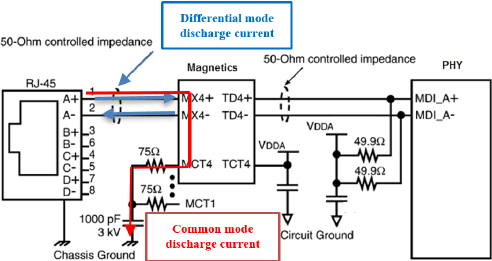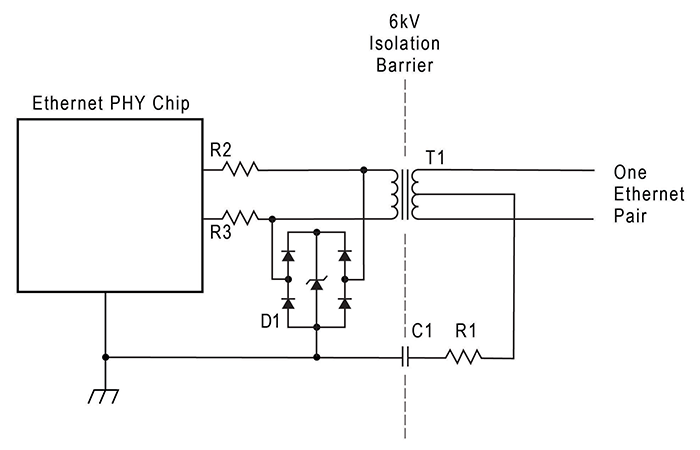I am seeing a problem with Micrel Ethernet PHY KSZ8721BLI.
Because of some mechanical constraints, the PHY is located near the edge of the main board and a small card edge connector. The board slides into a housing, and at the end of its travel, a smaller board mounted the back of the case and sporting a card edge connects to the card edge connector of the larger board mentioned above. This small board is home to the Ethernet RJ45 connector and magnetics, and no particularly long traces are present.
My problem: I am seeing failures of the TX+/- and RX+/- pins on the Ethernet PHY, all shorts. I have not observed a cable discharge event (CDE) when plugging in an Ethernet cable once the board is in place, and my cable is only 3 m. I've looked at the behavior of the connector during insertions and extractions of the larger board and haven't seen anything strange. Also, this is a design that I've built repeatedly and never had a problem with before.
The circuit is basically a Bob Smith connection with 0 Ω resistor instead of the typical 75 Ω resistor.
Assuming that this isn't just a bad lot of Ethernet PHY ICs, does anyone have any ideas of what might kill the PHY TX and RX pins?


